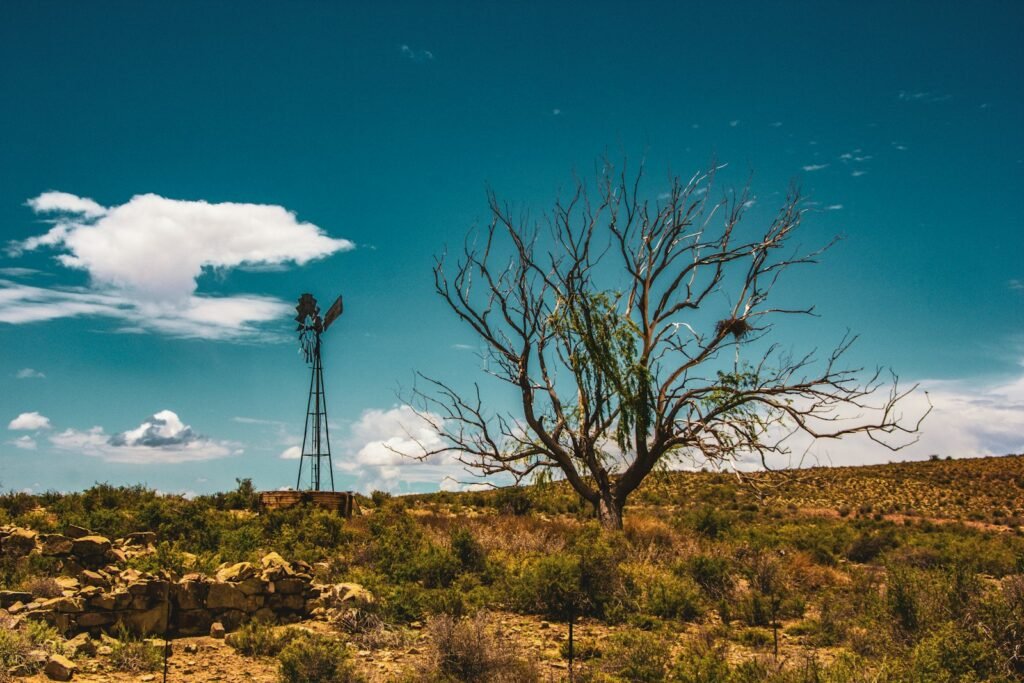Imagine walking through a sun-dappled forest on a hot summer day. The leaves rustle, birds call overhead, and somewhere among the green giants, a tree lets out a scream—only, you can’t hear it. The sound is real, but it’s not meant for your ears. It’s a secret language, a desperate signal sent out when thirst takes hold. This isn’t a fairy tale or a fantasy—it’s science, stranger and more astonishing than fiction. Trees, those silent, stoic guardians of our planet, have a story to tell, and it’s far more dramatic than you ever imagined.
The Whispered Warnings of the Forest
Most of us think of trees as quiet and passive, just standing there, growing slowly. But deep inside their trunks, trees are anything but silent. When they’re desperate for water, they emit sounds that scientists describe as “screams”—though these are ultrasonic, far beyond what humans can hear. Researchers discovered this phenomenon using sensitive microphones in the lab and in the wild. The next time you see a tree in a drought, remember: it might be crying out for help, even if you can’t hear a thing.
What Triggers a Tree’s Silent Scream?
The main trigger behind these hidden screams is drought. When soil dries up, trees can’t suck up as much water through their roots. Their internal plumbing—called xylem—starts to fail, kind of like a straw that’s trying to sip up the last drops from an empty cup. The tension inside the xylem becomes so intense that bubbles of air form and snap, creating tiny shockwaves. These pops and crackles are the tree’s way of saying, “I’m thirsty!” but in a language only special microphones can detect.
The Science of Cavitation: When Water Becomes Air
This wild process is called cavitation. Imagine blowing bubbles in a milkshake, only the bubbles are bad news for the tree. In healthy times, water moves smoothly from the roots to the leaves. But during a drought, the tension pulls so hard that the water column breaks, and air bubbles form. When these bubbles burst or snap, they make ultrasonic sounds. It’s not just noise—it’s the physical evidence of a tree’s struggle to survive.
The Role of Xylem: The Tree’s Lifeline
The xylem acts like a network of straws carrying water up from the roots. Under normal conditions, it’s a smooth ride. But when the tree is thirsty, the xylem is under stress. The water molecules try to stick together and keep moving upward, but when the pressure gets too high, they lose the battle. The xylem’s structure amplifies these snap-crackle-pop sounds, sending a signal out into the world—even if we can’t hear it with our own ears.
Ultrasonic Cries: Beyond Human Hearing
You might wonder why we don’t hear these arboreal cries when we stroll through the woods. The answer is simple: the sounds are ultrasonic, much higher pitched than what humans can detect. Scientists use special sensors to pick them up, translating the hidden signals into something we can study. Some animals, like bats or insects, might be able to tune in. For us, the forest remains a little quieter—but it’s alive with sound if you have the right tools.
Why Trees Scream: A Battle for Survival
These ultrasonic emissions aren’t just random noise—they’re the sound of a tree fighting for its life. When water gets scarce, the tree has to make tough choices: close its pores (stomata) to save water, risk overheating, or keep them open and risk drying out. The “screams” are a side effect of this struggle, a sign that the tree is teetering on the edge. It’s a silent drama, happening all around us.
How Scientists Discovered the Tree’s Voice
It wasn’t until scientists started listening closely with high-tech equipment that we realized trees have something to say. In the 2010s, researchers placed ultra-sensitive microphones on tree trunks and branches, capturing the mysterious pops and clicks. When they compared healthy trees with those under drought stress, the difference was clear—a thirsty tree is a noisy tree, even if the noise is hidden from us.
Real-World Examples: Drought-Stricken Forests
Take California’s ancient oaks or the Amazon’s towering giants during a dry spell. Scientists have recorded a dramatic uptick in ultrasonic sounds during drought seasons. In some experiments, the number of “screams” per minute skyrocketed as the soil dried out. This isn’t just a lab phenomenon—it’s happening in forests and groves around the globe, wherever water is in short supply.
Can Other Trees or Animals Hear the Screams?

This is where things get even more fascinating. Some researchers believe that insects, rodents, or even neighboring trees might pick up on these ultrasonic signals. Imagine a beetle steering clear of a dying tree, or a neighboring plant preparing for tough times ahead. The forest is a bustling community, and these hidden screams could be part of its secret communication system, warning others of danger.
What Does a Tree Scream Sound Like?

If you could hear these sounds, you might be surprised. They’re not like a human scream, but more like a series of rapid clicks, pops, and crackles—almost like popcorn popping in a microwave. It’s a far cry from the poetic notion of a tree crying, but in scientific terms, it’s just as urgent. Each sound tells a story of struggle, survival, and the relentless fight against drought.
Impacts on Tree Health and Growth
These ultrasonic emissions are more than just a science curiosity; they signal real trouble for the tree. If a tree “screams” too much, it means its water transport system is breaking down. Over time, repeated cavitation can weaken the tree, stunt its growth, and make it more vulnerable to disease or pests. In severe cases, too many bubbles can kill the tree outright.
Can Humans Use These Screams for Good?

Scientists are now exploring ways to use these signals to help trees. By monitoring the ultrasonic sounds, forest managers can detect drought stress early and respond with targeted watering or conservation strategies. Imagine a future where a network of sensors listens to the forest, alerting us before trees reach the point of no return. It’s like giving trees a voice in their own care.
A New Way to Monitor Forest Health

Traditional methods of assessing tree health rely on visible symptoms—wilting leaves, brown needles, or falling branches. But by the time these appear, it might be too late. Ultrasonic monitoring offers a sneak peek into the tree’s internal state, catching problems before they explode into crisis. This could revolutionize forestry, agriculture, and even urban landscaping.
The Broader Implications: Climate Change and Survival
As our planet heats up and droughts become more frequent, the stakes grow higher. Trees are on the front lines, and their hidden cries are a warning to us all. Scientists warn that widespread tree death could accelerate climate change, disrupt ecosystems, and threaten the air we breathe. Listening to the trees—literally—could help us adapt and protect the planet’s green lungs.
Surprising Connections: Water, Sound, and Life
It’s amazing to think that something as simple as a water droplet can create a sound that echoes through a forest. This invisible dialogue between tree and environment reminds us that everything in nature is connected. From the soil beneath our feet to the air above our heads, the story of a tree’s thirst is a story about life itself.
Lessons from the Tree’s Struggle
There’s something humbling about knowing that trees, which seem so strong and silent, are actually engaged in a constant battle. Their hidden cries are a reminder that survival is never guaranteed, even for the mightiest oak or tallest pine. By paying attention to these signals, we can learn to be better stewards of the natural world.
Personal Reflections: The Power of Listening
I’ll never walk through a forest the same way again. Knowing that the trees around me might be screaming for water makes me feel connected to them in a new, almost haunting way. It’s a little like learning a secret about an old friend—something that changes how you see them forever. Maybe, just maybe, listening is the first step to truly understanding.
Inspiring Wonder: The Hidden Life of Trees
The more we learn about trees, the more magical they seem. Their ability to “scream” when thirsty pulls back the curtain on a world full of hidden drama, resilience, and intelligence. The next time you find shade beneath a leafy canopy, remember that the trees around you have stories to tell—if only you know how to listen.
The Call to Action: Protecting Our Silent Guardians

Trees can’t speak our language, but they are trying to get our attention in their own remarkable way. Their ultrasonic screams are a plea for water, for care, and for respect. As droughts worsen and forests face unprecedented challenges, it’s up to us to respond. Will we listen, and act, before it’s too late?



